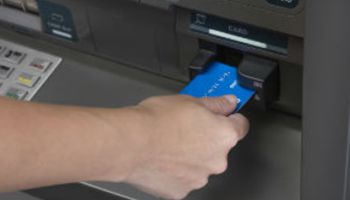One small voice for cash in digital world
Volunteer program seeks to boost cash withdrawals as budgeting tool
- |
- Written by Bill Streeter
 Sometimes taking money out can actually result in savings.
Sometimes taking money out can actually result in savings.
Is cash still king? It would be easy to say “no,” with all the attention given to cyber shopping this holiday season and the media coverage of digital payment options.
But according to the Diary of Consumer Payment Choice, released a year ago by the Federal Reserve Bank of San Francisco, cash is still the largest retail payment category by number of transactions. By volume, cash’s share is much lower than in the past, but it still dominates small-value transactions. If credit card and debit card transactions were combined, however, they would easily outnumber cash transactions.
Although the Diary authors conclude that cash usage remains a “unique, resilient, and heavily used consumer payment instrument,” its share is shrinking. The Fed study’s data were from 2015. With greater awareness of digital payment options, plus growing debit and credit card usage online, cash’s share is likely lower now.
Enter “Withdraw Cash Wednesday”
The gradual decline of cash transactions, and steady stream of “anti-cash” rhetoric in recent years was troubling to members of the International Marketing Committee of the Automated Teller Machine Industry Association (ATMIA). The association represents ATM manufacturers and operators, payment processors, ATM marketing firms, and others, including banks and credit unions.
After much discussion about ways to help promote the ATM industry, the committee recommended a program called “Withdraw Cash Wednesday” (WCW). It promotes and encourages the use of cash withdrawals from ATMs on Wednesdays—particularly the Wednesday before the Black Friday shopping marathon the day after Thanksgiving, as well as other holidays and heavy shopping times, including back-to-school periods.
The program depends on volunteer support and sponsorship dollars from ATMIA members, according to Peggy Olson, president and CEO of Strategic Marketing, and a member of the association’s International Marketing Committee. She says the overall budget for WCW is small and relies heavily on social media posts to generate visibility—primarily Facebook and Twitter. Some posts began around the Fourth of July holiday this year, and continued just before Labor Day, but the program ramped up more significantly beginning Oct. 1, says Olson.
Program goals
In an interview, Olson says that through the WCW program, the association is trying to increase ATM withdrawal transaction volume and revenue and gain mindshare for cash as the number-one payment vehicle for consumer spending.
“There seems to be a lot of cash bashing going on,” she notes, so the program also is a counterpoint to the efforts of some organizations to move the U.S. to a cashless society.
Another WCW goal is to help consumers understand the benefits of using cash to improve personal financial conditions. The association built a website for the program that spells out some of these benefits. A consumer-focused video uses animation to make some of the points, which include: cash is a great budgeting tool—only spend what you have; save money on interest paid on credit cards; save time on checkout—“cash is always quick and easy.”
Another benefit of cash is during natural disasters or other times of crisis when digital transactions may not work, notes Olson. Although she didn’t make the point explicitly, having some cash on hand by making it a habit to withdraw cash on a particular day each week could leave people in a better position if something unforeseen comes up, impacting digital networks—including ATM networks and bank branches.
The ATM industry is not against electronic transactions, Olson observes, pointing out that an ATM withdrawal, after all, is an electronic transaction. However, the group promotes freedom of payment choice and no digital discrimination toward the unbanked, underbanked, or digitally challenged, says Olson. “Payments should be inclusive of everybody,” she adds, including those that may be left out if the economy was totally electronic—“such as my 90-year old mother. Let consumers choose their method of payment.”
WCW impact so far
Olson says that ATMIA is waiting until the year is over before assessing whether the fledgling campaign produced any lift in cash withdrawals on Wednesdays before big shopping events. The group does track social media traffic, however. Olson says WCW has reached all 50 states in terms of impressions and other social media and website measures. Analysis indicates that traffic comes from women over men two to one and that 75% comes from the age range of 25-55. Just 11% comes from the 18-24 segment.
The program is set to continue into 2018, but its scope and duration will depend on sponsorship dollars, says Olson. In any event, she feels it will take several years to gain traction. She points to American Express’s Small Business Saturday program. After eight years of marketing, consumer awareness of that national program is just 61%, says Olson. Withdraw Cash Wednesday, she says, is still in its infancy.
Tagged under Technology, Payments, Branch Technology/ATMs,













